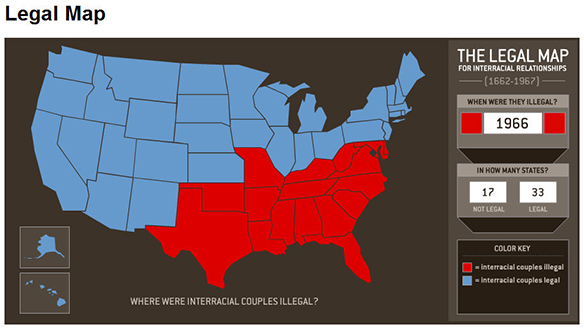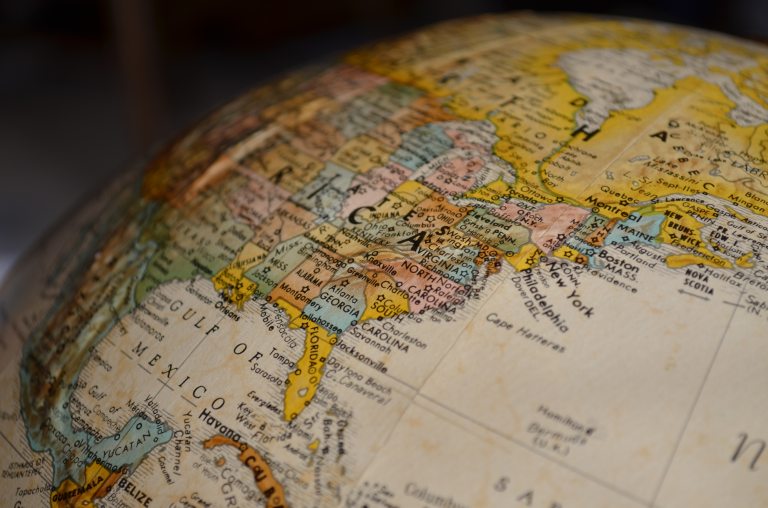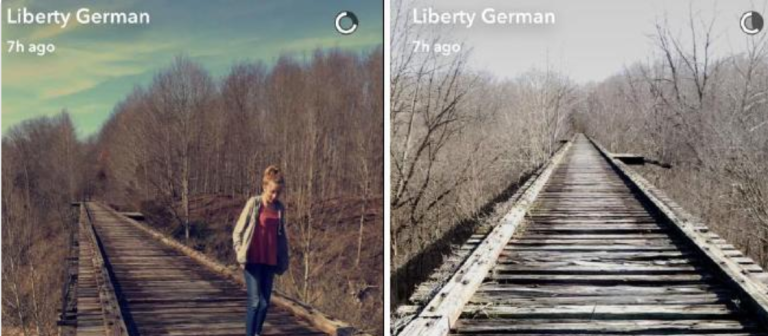
The Problem With Interracial Marriage
It’s really hard to believe that in 1966, less than 50 years ago, interracial marriages were still pretty much illegal across the United States. You know, people were grossed out by the idea that two people from different racial backgrounds would get their jungle fever on. That’s not even a full century ago — let that sink in for a second. Now it seems totally ridiculous to deny people of different racial backgrounds the right to marry.
Before the Supreme Court struck down anti-miscegenation(mixed marriage) laws in 1967, interracial marriage was legal virtually everywhere but the deep south: Texas, Virginia, Florida, Louisiana, Missouri, Alabama, Georgia, etc. Surprise! In fact, in 1966 it was still illegal in 17 states. 17! And even after the courts struck these laws down, it still took some states 15-20 years — or longer — to put any legal movement on the books.
American racial history, and the history of the mixing of races in particular, is a super fascinating topic. And being reminded of some of the more ridiculous highlights from our past helps us see why things are the way they are today. In 1908 there was a black/white banquet sponsored by the Greater New York Cosmopolitan Society, dubbed by Southern naysayers as “the great miscegenation banquet” — they were very creative — and those southern people could not get into all of that racial mixing. You know what I say: if people can’t take what you’re doing, it means you’re doing something right. Anyway, The Richmond News Leader, one of the more conservative political papers in the country, described the fabulous party as matter of Northern foolishness, saying it was “eminently disgusting.” They were all, “We down here have long since settled the question that there can be no such thing as miscegenation and equality between the races.”
Yikes, guys.
But it doesn’t even stop there. Did you know that as early as 1833 the state of Alabama had separate punishments for couples who committed adultery based on whether a white-white couple or a black-white couple was involved? Separate punishments for the same deed. As if that wasn’t enough, there was Virginia’s Act to Preserve Racial Integrity of 1924 which literally required people getting married in the state to hand in authenticated racial genealogies to prove that the couple came from the same racial stock.
I can’t.
And in 1963, a journalist by the name of Tuck Stadler asked President Truman whether interracial marriage would become widespread in the United States, and the President actually said: “I hope not; I don’t believe in it. Would you want your daughter to marry a negro?” before finally arguing that interracial marriage definitely went against the teachings of the Bible. 1963! Most of our parents were probably teenagers by then.
And in addition to the usual Bible thumping reasons for being against interracial marriage, there was also this bit from the 1967 Loving vs Virginia case which struck down prohibitions of interracial marriage:
It is clear from the most recent available evidence on the psycho-sociological aspect of this question that intermarried families are subjected to much greater pressures and problems then those of the intermarried and that the state’s prohibition of interracial marriage for this reason stands on the same footing as the prohibition of polygamous marriage, or incestuous marriage or the prescription of minimum ages at which people may marry and the prevention of the marriage of people who are mentally incompetent
Does any of this sound familiar to anyone?
Unlike nearly every other country, interracial marriage has been prohibited basically throughout the entire history of the United States — from 1662 until 1967. And that irreversible fact has extensive, omnipresent consequences, shaping everything from access to stuff to who makes it in Hollywood to our ideals of beauty.
As we inch towards greater equality and access for all, we should always remind ourselves that a glance at the past and where we were is almost always a story about the present and where we can go. ![]()











